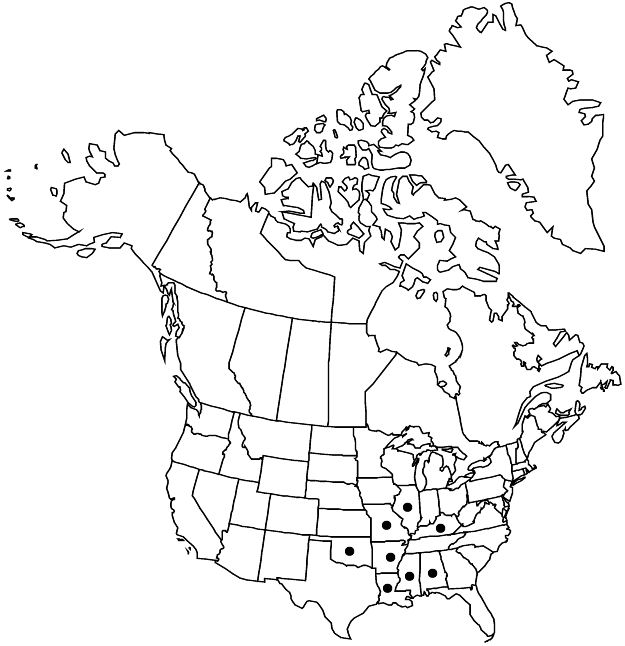familyCucurbitaceae
genusCucurbita
speciesCucurbita melopepo
subspeciesCucurbita melopepo subsp. texana
Cucurbita melopepo var. ozarkana
Phytoneuron 2011-13: 24. 2011.
Endemic
Basionym: Cucurbita pepo var. ozarkana D. S. Decker J. Ethnobiol. 13: 69. 1993
Pepos usually solid ivory, sometimes green-and-white-striped, usually not yellow or orange. Seeds: germination within 1–4 days.
Phenology: Flowering Jun–Oct.
Habitat: Stream banks, gravel bars, bottomland forests, soybean, corn, and cotton fields, old fields, fencerows, railroad rights-of-way, roadsides, disturbed sites
Elevation: 20–200 m
Distribution

Ala., Ark., Ill., Ky., La., Miss., Mo., Okla.
Discussion
Variety ozarkana occurs in the central Mississippi valley and the Ozark Plateau. Populations in Alabama were included in var. ozarkana by C. W. Cowan and B. D. Smith (1993), but their evolutionary status was considered uncertain by D. S. Decker et al. (1993).
Selected References
None.
Lower Taxa
None.
... more about "Cucurbita melopepo var. ozarkana"
glabrous +
absent +
pustulate +
cordate +
white-spotted +
broadly ovate-cordate;triangular-cordate or suborbiculate +
adnate +
oblong +
narrow +
tubular-campanulate +
1;4 +
straight +
berrylike +
aculeate +
bitter +
absent +
unisexual +
cultivated +
5-ribbed +
stipitate;peltate +
scattered +
bushy +
Stream banks, gravel bars, bottomland forests, soybean, corn, and cotton fields, old fields, fencerows, railroad rights-of-way, roadsides, disturbed sites +
perennial +
campanulate +
umbellate;subumbellate +
alternate +
ovate-deltate;obovate or obovate-rhombic +
scattered +
raised-thickened +
color +
elongate-whitened +
pubescent +
expanded +
solid +
ribbed +
yellow;orange +
connate +
1/2 +
broadly ovate;oblong-ovate oblongelliptic triangular triangular-ovate or lanceolate-ovate +
stipitate-glandular;hispidulous;hirsutulous +
Phytoneuron +
2011 +
tuberous +
fibrous +
fibrous +
germinating +
connate +
vestigial +
subulate-linear;lanceolate +
Endemic +
connate +
rooting +
trailing +
densely puberulent;hirsutulous +
eglandular +
Cucurbita melopepo var. ozarkana +
Cucurbita melopepo subsp. texana +
variety +
absent +
connate +
exalbuminous +
annual +
trailing +
monoecious +